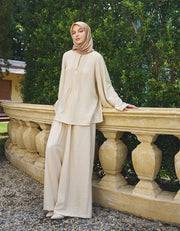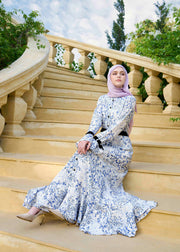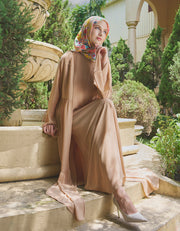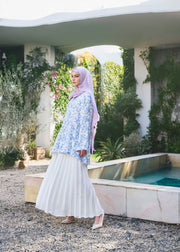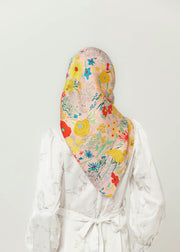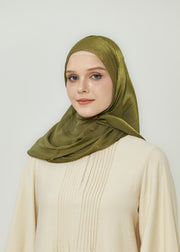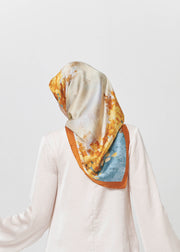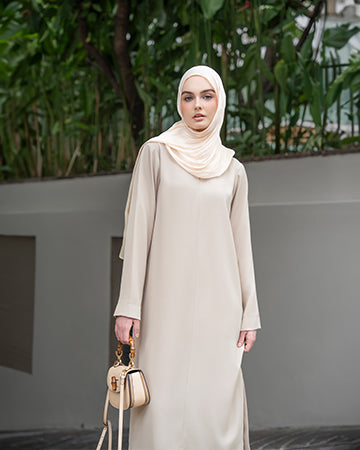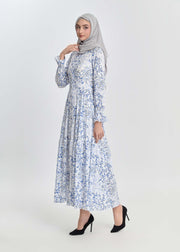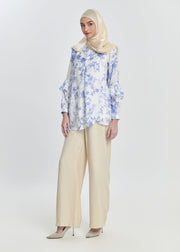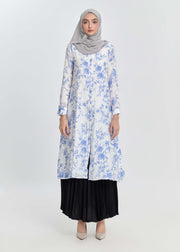The Evolution of Abaya Kimono in Modern Fashion
In the world of modest fashion, the abaya kimono has emerged as a standout symbol of cultural elegance blended with contemporary design. But how did this unique garment become a global fashion statement? The abaya kimono evolution reflects more than just shifting aesthetics—it captures the story of heritage, identity, and style across generations.
This article explores the transformation of the abaya kimono from traditional attire to modern-day essential, showing how its versatility and beauty continue to inspire modest fashion worldwide.
Understanding the Roots: What Is an Abaya Kimono?
Before diving into the abaya kimono evolution, it’s essential to understand what defines this garment.
The abaya kimono is a hybrid style that merges the traditional Middle Eastern abaya with elements of the Japanese kimono. It maintains the modesty of a classic abaya—long, flowing, and loose—but incorporates features like wide sleeves, open fronts, and detailed patterns typically associated with kimonos.
This blend has created a modern interpretation of modest wear that is fashionable, functional, and flexible across different cultures.
The Origins: Early Steps in Abaya Kimono Evolution
The abaya kimono evolution began in the early 2000s, when Muslim women around the world started experimenting with different silhouettes and materials while still adhering to Islamic dress codes.
Fashion designers in countries like the UAE, Turkey, and Indonesia began to reinterpret the abaya, taking cues from Japanese minimalism and elegance. The result was a flowing, kimono-inspired version of the abaya that appealed to younger, trend-conscious wearers.
Key early features:
-
Open-front designs with tie belts
-
Soft fabrics like satin and chiffon
-
More variety in color beyond traditional black
-
Minimalistic cuts inspired by East Asian garments
This period marked a turning point: the abaya was no longer just traditional—it became transitional.
The Origins: Early Steps in Abaya Kimono Evolution
Abaya Kimono Evolution in the 2010s: From Local to Global
By the 2010s, the abaya kimono evolution had accelerated. Social media platforms like Instagram and Pinterest gave modest fashion influencers a stage to share new ways of styling abaya kimonos.
Key developments during this era included:
-
Embellished designs: sequins, lace trims, and embroidery entered the scene.
-
Street-style adaptation: abaya kimonos were worn over jeans, sneakers, and layered accessories.
-
International exposure: Non-Muslim fashion lovers started incorporating abaya kimonos into their wardrobes as stylish layering pieces.
Fashion weeks in Dubai, Jakarta, and London began to feature abaya-inspired garments, positioning the abaya kimono as a serious contender in global fashion trends.
How Designers Are Leading the Abaya Kimono Evolution
Today’s designers play a pivotal role in shaping the ongoing abaya kimono evolution. They are pushing creative boundaries while respecting the garment's cultural significance.
Modern innovations include:
-
Two-tone and color-blocked designs
-
Fusion fabrics like silk blends and eco-friendly cottons
-
Belted silhouettes for structure and flair
-
Seasonal collections to cater to spring/summer and fall/winter
By integrating global fashion techniques and tailoring, designers have elevated the abaya kimono from niche garment to luxury staple.
The Abaya Kimono as a Symbol of Empowerment
One of the most important outcomes of the abaya kimono evolution is how it empowers women. In a world where fashion often demands exposure for validation, the abaya kimono proves that elegance and modesty can coexist with modern trends.
Many women choose the abaya kimono as a statement of identity and confidence—embracing their values without sacrificing their sense of style.
The Abaya Kimono as a Symbol of Empowerment
How to Style a Modern Abaya Kimono
Want to embrace the latest chapter in the abaya kimono evolution? Here are some tips to style yours for daily or special occasions:
-
Casual Day Look: Wear a printed abaya kimono over high-waisted trousers and a tucked-in blouse. Add loafers and a neutral hijab for balance.
-
Work-Ready: Choose a structured design in muted tones with a belt. Pair it with a sleek bag and pointed shoes.
-
Evening Elegance: Opt for satin or embroidered abaya kimonos. Add heels and statement jewelry to elevate the look.
Because of its versatility, one well-designed abaya kimono can be styled in multiple ways for different moods and moments.
Final Thoughts: Embracing the Abaya Kimono Evolution
The abaya kimono evolution is a beautiful example of how tradition can transform without losing its soul. From its humble roots in Islamic dress codes to its presence on international runways, the abaya kimono continues to redefine what it means to be modest and fashionable in the modern world.
Whether you wear it to express your faith, culture, or simply your style, the abaya kimono allows every woman to walk with grace, confidence, and individuality.
Discover the Modern Abaya Kimono at Minnaba
Looking for a timeless yet trendy abaya kimono to add to your wardrobe? At Minnaba, we celebrate the abaya kimono evolution with a curated collection of designs that honor tradition while embracing the future. Whether you prefer classic or contemporary styles, Minnaba has the perfect abaya kimono for your unique journey.


